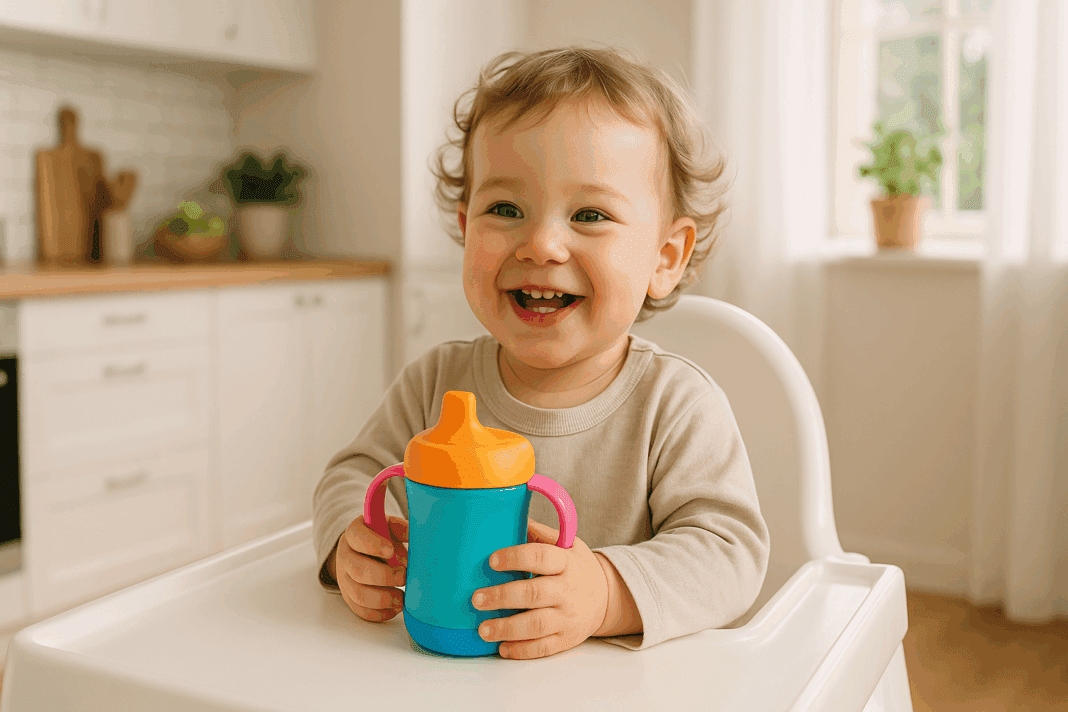Ensuring that children stay well-hydrated during their developmental years is a vital component of supporting their overall health, energy levels, and cognitive function. One often overlooked but incredibly important aspect of hydration habits in early childhood is the type of drinking vessel used. Kiddie cups play a critical role in transitioning from bottles to regular cups, promoting not just hydration but also healthy oral development, independence, and even fine motor skills. In this comprehensive guide, we will explore the nuanced factors involved in choosing the right kiddie cups for growing children, ensuring that your selection supports optimal hydration in a developmentally appropriate, safe, and health-conscious manner. Parents, caregivers, pediatricians, and child development experts alike can benefit from understanding how everyday items like childrens cups can either support or hinder healthy hydration patterns in young kids.
You may also like: The Ultimate Guide to Choosing the Best Sippy Cup for Healthy Hydration and Growing Kids

Why Healthy Hydration Matters in Childhood Development
The early years of a child’s life are marked by rapid physical, neurological, and emotional development. Hydration is a fundamental element that underpins all of these biological processes. Water supports brain function, joint lubrication, temperature regulation, and digestive health. For young children, particularly toddlers and preschoolers, water intake becomes even more crucial because their bodies have a higher percentage of water compared to adults. Furthermore, they are more vulnerable to dehydration due to their active lifestyles, faster metabolism, and less-developed thirst recognition signals.
Dehydration in children may present differently than in adults and can manifest through irritability, fatigue, reduced concentration, dry lips, or decreased urine output. Chronic underhydration can also compromise their immune response and may even affect their long-term cognitive development. Establishing good hydration habits early is not only beneficial for immediate health but also sets the foundation for a lifetime of wellness. Kiddie cups act as tangible tools to support this by making fluids accessible and appealing in a format designed for small hands and developing coordination.
Importantly, the type of liquid consumed also matters. While water should be the primary beverage, parents often contend with sugary drinks, juices, and flavored milks that appeal to kids’ palates but contribute to excess calorie intake and dental concerns. Choosing functional kids cups that align with healthy beverage choices encourages consistent water intake while minimizing the reliance on less nutritious options. The right cup can subtly reinforce healthy behaviors, making hydration a routine part of a child’s day.

Design Matters: The Anatomy of a Good Kiddie Cup
At first glance, kiddie cups might seem like simple products, but their construction and design are anything but basic. When selecting a cup for a child, several critical features must be evaluated: material safety, spout or lid design, valve functionality, ease of cleaning, ergonomic compatibility, and developmental appropriateness. These elements determine whether the cup will support or hinder hydration and health.
Material safety is paramount. High-quality childrens cups should be BPA-free, phthalate-free, and free of other harmful chemicals that may leach into liquids. Stainless steel and high-grade silicone are increasingly popular choices for their durability, safety profile, and environmental sustainability. Plastic cups should be certified as food-grade and regularly inspected for signs of wear, such as cracking or discoloration.
Spout design is more than an aesthetic choice—it influences both how easily a child can drink and how well the cup supports oral development. Soft spouts may mimic a bottle nipple and are suitable for early transitions, while hard spouts and straw-based models promote muscle development in the mouth and face. Experts often recommend moving to open cups or those with minimal spout interference as soon as children show readiness, as prolonged use of spouted cups can contribute to dental misalignment or delayed speech articulation in some cases.
Valve and flow control mechanisms are essential for spill prevention, but they can also create barriers. While no-spill valves help reduce mess, they may also require stronger suction or complicated sucking patterns, which may not be appropriate for all developmental stages. Some children may become frustrated or fatigued by valves that restrict flow too much, ultimately reducing their desire to drink. A balance must be found between functionality and ease of use to encourage regular hydration.
Ergonomics also plays a role in fostering independence. Cups with handles, contoured grips, and lightweight materials can support a child’s autonomy, making it easier for them to control their own hydration. As they grow, transitioning to more adult-like cups with minimal support features helps build confidence and coordination. Ultimately, the right kiddie cup should match both the child’s current developmental abilities and future growth trajectory.
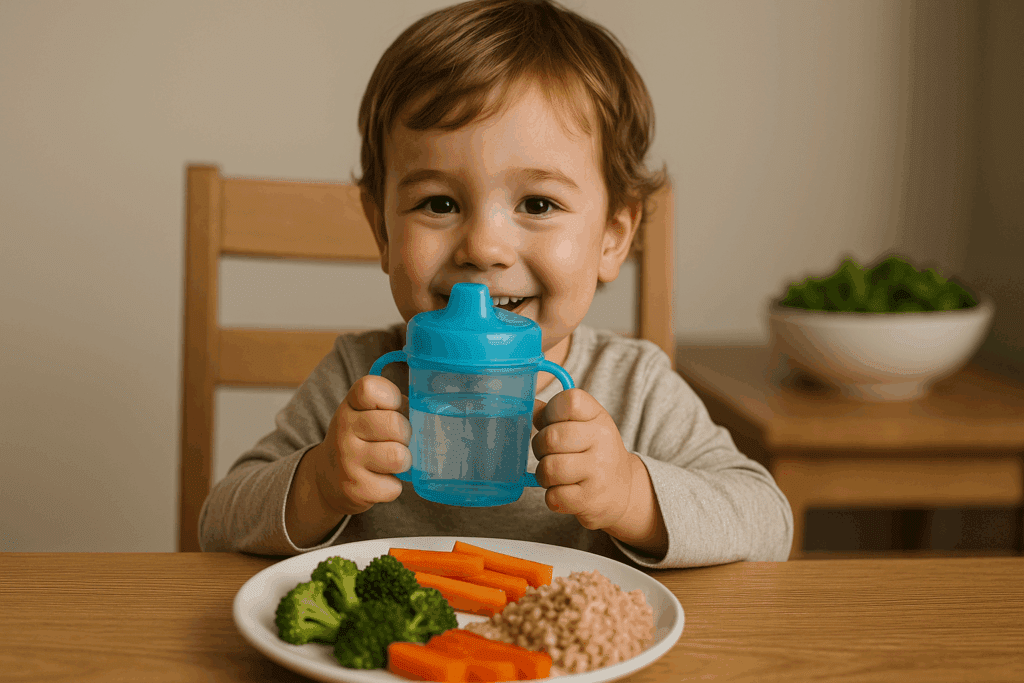
Hydration Habits and Their Long-Term Impacts on Nutrition
Beyond immediate hydration, the way children consume liquids can influence their nutritional patterns over time. Children who are accustomed to sipping sugary beverages throughout the day using spill-proof cups may consume more sugar and fewer nutrient-dense foods. Conversely, children who drink water during and between meals using developmentally appropriate kids cups are more likely to stay hydrated without overloading on calories or sugar.
This distinction is crucial because many parents mistakenly assume that 100% juice or flavored milk is equivalent to water in hydrating value. While such beverages contain fluids, they also include natural or added sugars that can contribute to weight gain, insulin resistance, or tooth decay. The American Academy of Pediatrics recommends limiting juice intake and focusing on water and milk as the primary drinks for children. Encouraging children to use kiddie cups filled with water throughout the day helps normalize water as the default beverage, especially if the cups are fun, accessible, and child-friendly.
The psychology of cup usage also intersects with behavioral nutrition. Children may form strong preferences for specific cups, associating them with positive experiences like playtime, bonding, or comfort. When a child’s favorite cup is associated with water or milk, they are more likely to maintain healthy drinking patterns. On the other hand, if a particular cup is always used for juice, it may become a trigger for cravings, making it harder to transition to healthier options. Understanding this behavioral component allows parents and caregivers to make more strategic choices in rotating, labeling, or designating specific childrens cups for different beverage types.
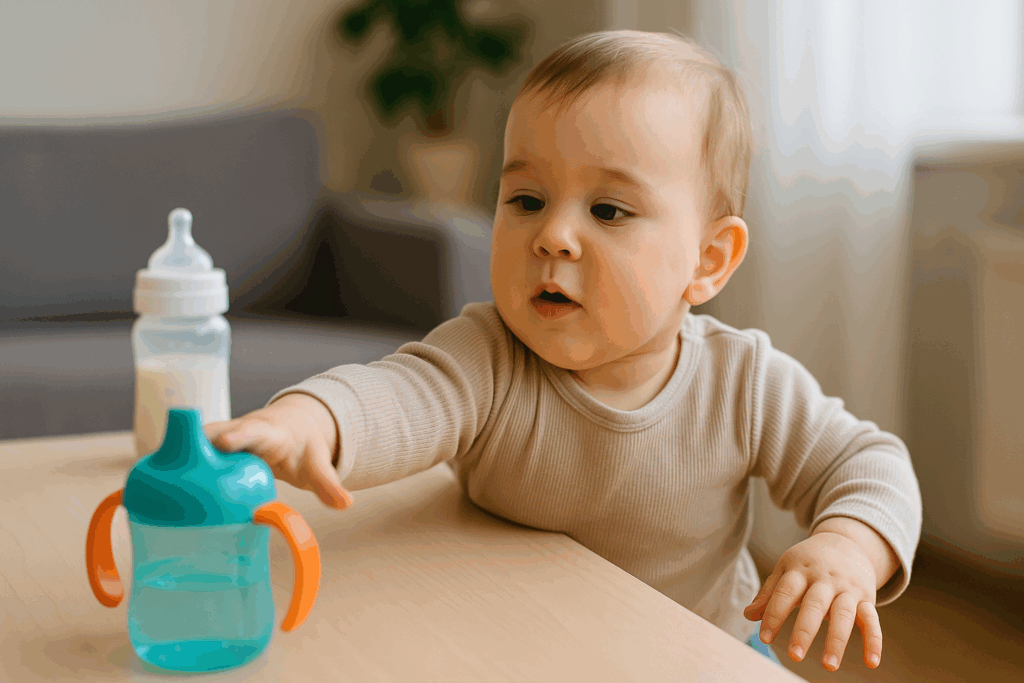
Kiddie Cups and the Transition from Bottle to Cup
One of the most challenging transitions for parents and toddlers alike is the move from bottle feeding to cup drinking. This process typically begins around six to twelve months of age, when children start experimenting with holding cups, sipping, and learning to coordinate hand-to-mouth movements. This transition is not just a mechanical shift but also an emotional and sensory one, as children give up a soothing routine in favor of a more mature skill.
Kiddie cups serve as intermediaries during this transition, offering the familiarity of a spout with the independence of a cup. The right cup can ease separation from the bottle by mimicking certain features while encouraging new skills. For example, training cups with soft spouts and side handles offer a gentle learning curve. As the child becomes more comfortable, parents can gradually introduce straw cups, 360-degree rim cups, and eventually open cups.
Timing is crucial. Delaying the transition too long can result in prolonged dependence on the bottle, which is linked to increased risks of tooth decay, ear infections, and speech delays. On the other hand, rushing the transition may frustrate a child who lacks the motor coordination or confidence to manage a new cup. Observing a child’s readiness cues—such as reaching for your cup, showing interest in self-feeding, or successfully sipping from a spoon—can inform the right moment to start introducing kids cups into their daily routine.
Parents should also recognize that transitions involve setbacks. Spills, messes, and refusals are part of the learning curve. Keeping a positive and patient approach while offering a variety of appropriately designed cups can make the experience smoother. Celebrating small milestones—such as finishing an entire cup of water independently—can further reinforce positive behaviors around hydration and autonomy.
What Pediatricians Say About Choosing the Right Kiddie Cups
Pediatricians, speech-language pathologists, and pediatric dentists offer expert guidance on the selection and use of childrens cups. Their recommendations emphasize not only practicality but also developmental impact, hygiene, and safety. For instance, many pediatricians advise moving away from bottle use by the age of one and transitioning children to open cups or straw cups by eighteen months. This guidance stems from the need to support normal oral and speech development, which can be hindered by extended use of bottle nipples or rigid spouts.
Speech-language experts often favor straw cups over spouted cups because they engage the muscles used in speech production, such as the lips, tongue, and cheeks. Unlike traditional sippy cups, which may encourage a more passive sucking motion, straw cups promote the muscle coordination needed for articulation. However, these benefits depend heavily on proper use and design. Some straw cups require too much effort to draw liquid, leading to frustration or insufficient hydration, particularly in younger toddlers.
Pediatric dentists also weigh in on cup choices, particularly in the context of dental health. They warn against frequent exposure to sugary drinks through no-spill sippy cups, which can lead to a condition known as “baby bottle tooth decay.” This occurs when sugar-laden liquids remain in contact with teeth over extended periods, creating an environment for bacterial growth. To mitigate this, experts recommend filling kids cups primarily with water and limiting juice or milk to mealtimes.
Hygiene is another key concern. Pediatricians stress the importance of selecting cups that are easy to disassemble and clean thoroughly. Residual milk or juice left in poorly cleaned components can harbor harmful bacteria or mold. Dishwasher-safe, simple-to-clean designs with minimal crevices are ideal, and parents should regularly inspect parts for signs of wear or buildup.
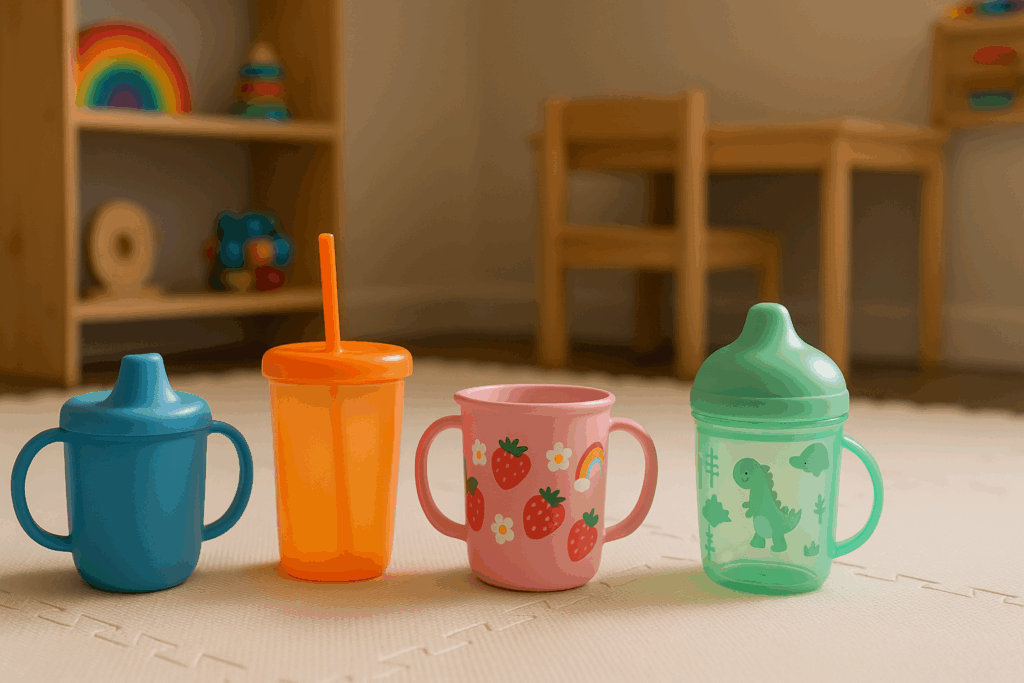
Understanding Kiddie Cups Through the Lens of Behavioral Psychology
Beyond their physical characteristics, kiddie cups also play a significant role in shaping children’s psychological associations with hydration. A cup is more than just a container; it is a tool that can reinforce autonomy, emotional security, and daily structure. For example, when children are allowed to choose their own cup—based on color, character, or design—they may feel a sense of control and ownership over their hydration habits. This autonomy can foster a more positive attitude toward drinking water or milk, especially when the cup becomes a source of personal identity.
Color psychology also influences preferences. Bright, bold colors often appeal to younger children, while older toddlers may favor designs that reflect their developing interests or mimic adult items. Some parents use this to their advantage by assigning specific colors to different beverages, times of day, or routines. For instance, a blue cup may be for water during outdoor play, while a green cup may be used at mealtimes for milk. This method helps establish associations and predictability that children find comforting.
Routine-building is another key psychological benefit. Integrating specific kiddie cups into daily rituals—such as placing a cup on the breakfast tray each morning or packing it for preschool—can turn hydration into a dependable habit. Children who learn to reach for their cup as part of a structured routine are more likely to meet their fluid needs without external prompting. This approach also encourages self-regulation and helps children recognize their own hydration cues.
When used with intention, kiddie cups can serve as positive behavioral cues that support not just hydration but emotional development. They can symbolize maturity, personal space, and responsibility. As such, choosing and presenting cups should be done thoughtfully, taking into account the child’s temperament, preferences, and developmental needs.
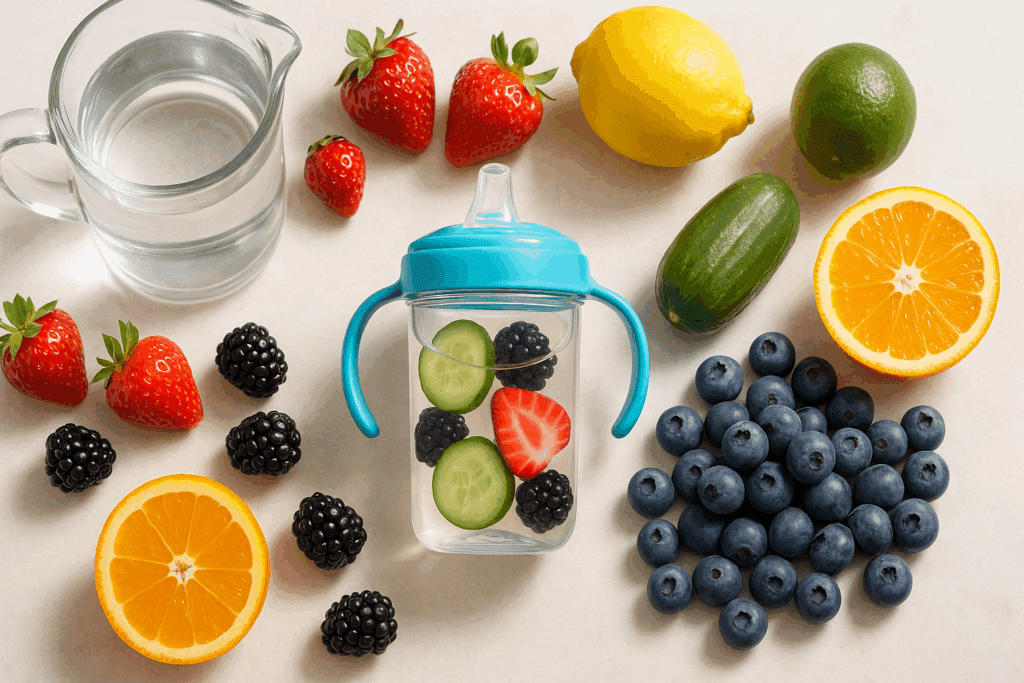
How Kiddie Cups Support Healthy Beverage Choices for Kids
In the landscape of child nutrition, beverage choices are often as influential as solid foods. The American Academy of Pediatrics recommends limiting the intake of sugary drinks and promoting water and milk as primary sources of hydration. Kiddie cups, when used strategically, can support this guidance by reinforcing the presence of healthy beverages in a child’s environment.
One effective method is to use designated kids cups solely for water. This reduces the risk of reinforcing sugary drinks as the default choice and helps establish water as a primary source of hydration. By consistently offering water in visually appealing, easy-to-hold cups, parents can influence taste preferences and beverage expectations. Over time, this conditioning can increase water consumption and reduce reliance on sweetened drinks.
Flavored water alternatives and infusions (such as cucumber or berry slices) may also be introduced to pique interest in water without relying on sugar. Transparent cups allow children to see the fun colors or floating fruit, turning hydration into a multisensory experience. The combination of visual appeal, novelty, and taste can be a powerful motivator for children who are reluctant to drink plain water.
Milk, another foundational beverage for children, also benefits from cup-based delivery. Serving milk in age-appropriate childrens cups—rather than bottles—encourages portion control, healthy sipping behavior, and teeth-friendly consumption. Parents should aim to serve milk during meals rather than allowing children to carry milk-filled cups throughout the day, as this can lead to excess calorie intake and dental risks.
By aligning cup usage with healthy beverage availability, parents can create an environment where children naturally gravitate toward nutritious hydration. The cup becomes not only a vessel for fluid but a tool that shapes behavior, expectations, and long-term wellness patterns.
Frequently Asked Questions About Kiddie Cups, Hydration, and Healthy Drinking Habits
How Do Kiddie Cups Affect a Child’s Transition to Open Cups in Preschool Years?
The design and use of kiddie cups can significantly influence how easily a child transitions to open cups, especially in social settings like preschool. Children who are gradually introduced to open cup drinking at home tend to demonstrate better readiness when required to do the same in group environments. The familiarity of drinking from an open cup reduces spillage anxiety and supports the child’s confidence during snack or meal times with peers. Kiddie cups that mimic the flow and handling of regular cups, such as 360-degree rim models, serve as excellent transitional tools. Choosing cups that develop motor coordination and independence at home can make the leap to classroom expectations smoother and more developmentally aligned.
Are There Environmental Considerations When Choosing Kiddie Cups?
Absolutely. As awareness around sustainability grows, many parents are opting for eco-conscious kiddie cups made from materials like stainless steel, bamboo fiber, or food-grade silicone. These alternatives to single-use plastics reduce long-term environmental waste and offer durability that makes them a better investment over time. Reusable kids cups that come with replaceable components (such as silicone straws or gaskets) also minimize the need to replace the entire product, further reducing waste. Brands now market biodegradable or recyclable childrens cups that maintain safety standards without sacrificing eco-responsibility. By prioritizing sustainable options, parents not only support their child’s health but contribute to a healthier planet for future generations.
What Are Some Signs That a Kiddie Cup May Be Inhibiting Hydration?
Some children drink less water not because of the beverage but due to frustration with the cup itself. If your child frequently throws the cup, avoids using it, or shows signs of fatigue after sipping, it may indicate the flow is too restricted or the suction mechanism too complex. Other signs include prolonged periods without drinking or a sudden disinterest in fluids. Certain no-spill valves, while great for cleanliness, require more suction effort than young children can manage easily. It’s essential to observe how your child interacts with various kids cups and adjust accordingly to ensure that hydration remains consistent and enjoyable.
Can Kiddie Cups Impact a Child’s Social Development?
While it may seem unlikely, the use of kiddie cups can subtly influence a child’s sense of independence and social confidence. During group meals, children notice what peers are using, and having a cup that aligns with their developmental stage can reinforce a feeling of maturity and belonging. Conversely, being the only child with a “babyish” cup might lead to embarrassment or reluctance to participate in group eating activities. Allowing children to choose their own cups from an assortment of age-appropriate options helps validate their preferences and boost social confidence. Over time, kids cups become part of a child’s identity and contribute to self-expression and comfort in social environments.
How Do Kiddie Cups Help With Sleep and Bedtime Routines?
Many parents overlook the role of hydration tools in establishing nighttime routines. A designated bedtime kiddie cup, filled with a small amount of water and placed by the bedside, can comfort children who wake during the night feeling thirsty. Using the same cup consistently as part of a calming ritual reinforces a sense of security and helps transition the child into sleep mode. However, it’s important to use cups that are easy to manage in the dark and limit fluid quantity to avoid nighttime bathroom disruptions. Selecting the right kids cups for this context supports both physical comfort and emotional reassurance as part of a holistic bedtime strategy.
What Innovations Are Emerging in the Design of Childrens Cups?
The market for childrens cups is evolving rapidly with smart features that integrate technology and ergonomics. Some newer models include built-in hydration tracking to help parents monitor fluid intake, while others offer thermal regulation to maintain optimal drink temperature. Anti-microbial materials are also being incorporated to reduce bacteria buildup and enhance hygiene between washes. Additionally, sensory-friendly textures and customizable components allow parents to adapt cups to children with sensory processing sensitivities. These innovations not only improve the user experience but also offer valuable tools for ensuring consistent and safe hydration in a wide range of developmental contexts.
How Should Kiddie Cups Be Cleaned to Prevent Hidden Mold and Bacteria?
Proper cleaning practices for kiddie cups go far beyond a quick rinse. Many spill-proof childrens cups contain hidden valves, rubber seals, or crevices that trap moisture, creating a breeding ground for mold and bacteria. All detachable parts should be removed and scrubbed with a brush under hot soapy water daily. At least once a week, cups should be sterilized using boiling water or a dishwasher cycle if the materials permit. Parents should also periodically inspect all cup components for signs of wear, discoloration, or odor, which indicate it’s time to replace parts or the entire cup. Safe hydration starts with meticulous hygiene, especially for cups used daily.
Can Kiddie Cups Be Used in Baby-Led Weaning Programs?
Kiddie cups can complement baby-led weaning (BLW) practices by encouraging self-directed hydration alongside self-feeding. Offering small sips of water from an open cup or straw cup at mealtimes helps babies develop the same oral coordination and motor skills BLW is designed to foster. The key is choosing lightweight, easy-to-grip kids cups that match the baby’s current fine motor capabilities. Silicone training cups or dual-handled open cups often work well in this stage. Integrating these cups early in BLW programs reinforces autonomy and supports both hydration and motor development without creating a dependency on bottles.
What Role Do Kiddie Cups Play in Reducing Beverage Waste?
Choosing the right kiddie cups can significantly cut down on wasted drinks. When children use a cup that suits their drinking pace and motor skills, they are more likely to finish what they pour. Leak-resistant lids also prevent accidental spills that often lead to wasted milk or juice. Additionally, some cups come with volume markings that help caregivers measure out appropriate servings, reducing the chance of over-pouring. Parents who use refillable childrens cups also find it easier to control beverage quantity and monitor consumption, which can be especially helpful for budgeting and minimizing household waste.
Supporting Multisensory Development Through Kiddie Cups
Beyond hydration, kiddie cups contribute to multisensory learning by engaging sight, touch, taste, and motor function simultaneously. Cups with different textures, weights, and colors can stimulate tactile exploration and visual discrimination, especially in toddlers developing sensory awareness. Some designs use auditory feedback, like subtle clicks when the lid locks, helping children associate sound with action. This sensory integration supports neurological development and encourages a more mindful drinking experience. When carefully selected, kids cups become tools for both hydration and brain-building—bridging physical nourishment with cognitive stimulation in meaningful, everyday ways.
Conclusion: Empowering Healthier Habits: Why the Right Kiddie Cups Make a Lasting Difference
Choosing the right kiddie cups for your child is more than a matter of convenience or aesthetics—it is a meaningful decision that can have long-term implications for your child’s hydration, nutritional habits, and overall development. As explored throughout this guide, childrens cups are not just passive tools but active participants in shaping daily routines, supporting oral health, encouraging motor skill development, and promoting independence. When parents choose kids cups that align with their child’s developmental stage, health needs, and behavioral patterns, they create an environment where healthy hydration becomes a natural and joyful part of everyday life.
From ensuring material safety to selecting designs that align with speech and dental development, the right kiddie cups serve as subtle yet powerful tools in fostering a child’s wellness journey. They support transitions away from bottles, help children form associations between water and pleasure, and reduce reliance on sugar-laden beverages. Furthermore, these cups reinforce structured routines and empower children to take control of their own hydration habits from an early age—an essential foundation for lifelong health.
Ultimately, this is not just a guide about selecting a product; it is about investing in behaviors that matter. Healthy beverage choices begin with access and autonomy, both of which can be cultivated through something as simple as a thoughtfully chosen kiddie cup. Whether your goal is to encourage more water consumption, reduce dependence on sugary drinks, or foster self-reliance in your child, choosing the right cup is a small yet impactful step that supports their physical health and emotional growth. By making informed, intentional decisions, caregivers can use everyday objects to nurture a healthier, happier future for the children in their care.
Further Reading:
The Ultimate Guide on Choosing the Perfect Spout Sipper Cup for Your Baby
Drinking Water from a Cup Teaching your toddler to drink from a cup


